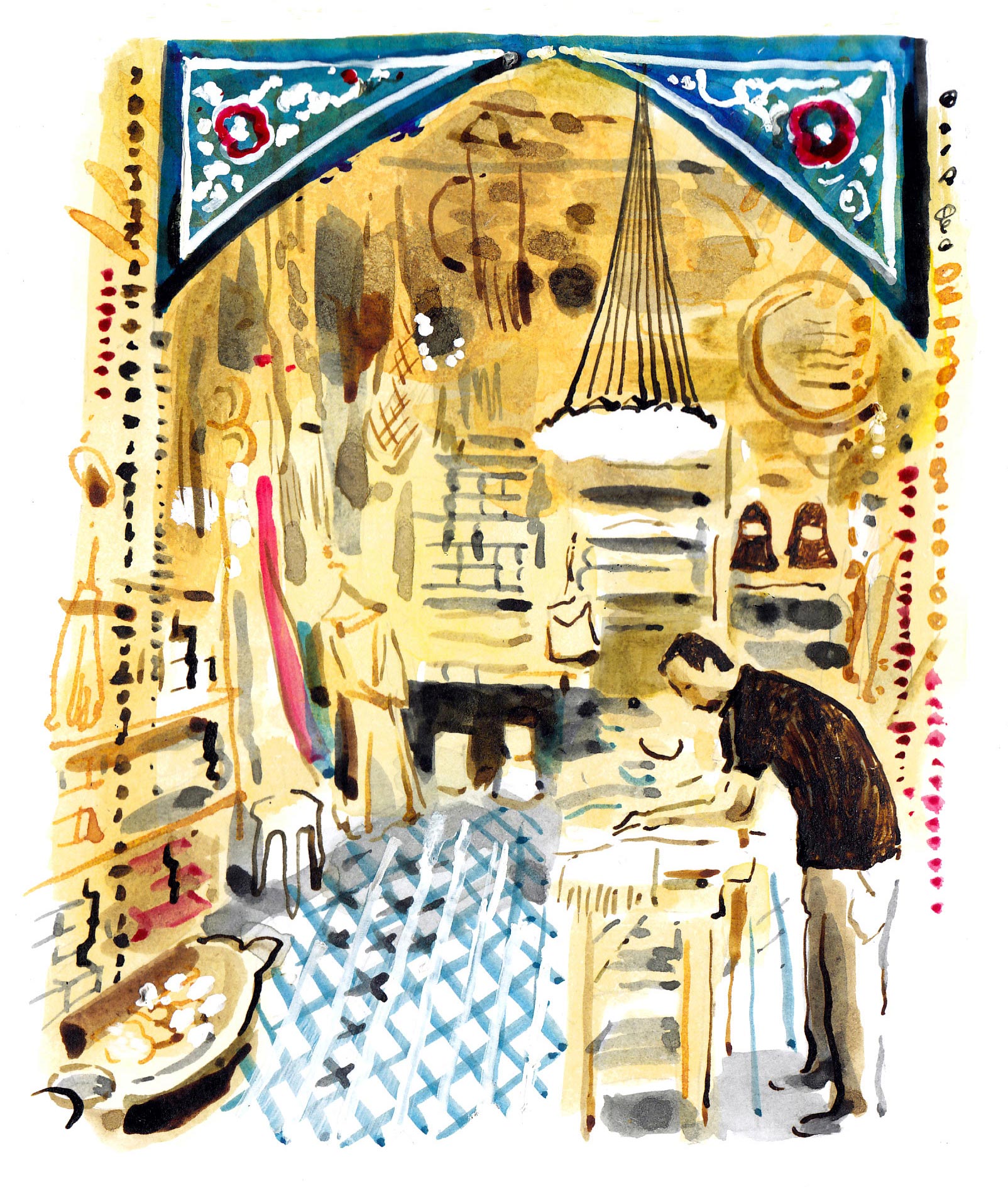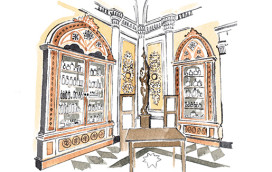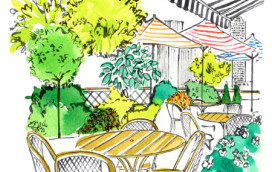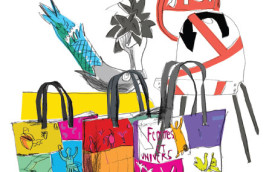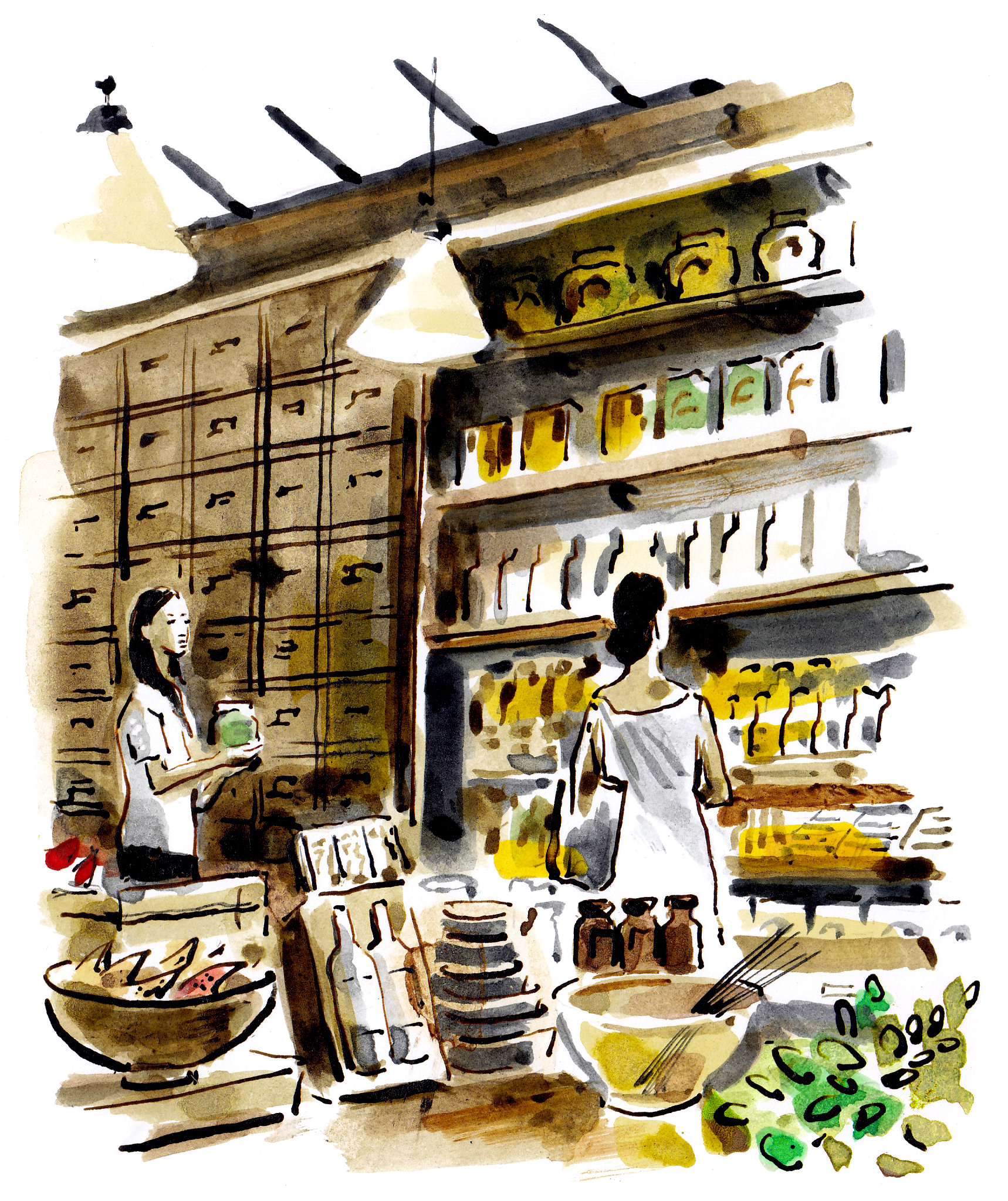
A South Indian
restaurant in Mumbai
by Naeem Khan
Trishna, Sai Baba Marg, Kala Ghoda, Fort, Mumbai
I first ate at Trishna ten years ago, and now whenever I’m back in Mumbai I just have to go there. The restaurant is hidden away in a back street in the Kala Ghoda area, which has a lot of art galleries and cafés. It’s been there for about 50 years and is owned by a family from Mangalore, which is on the coast in South India. As Mumbai restaurants go, it’s not particularly cool or fashionable, but it serves the best food in the world. The first time I went to Trishna I was a bit surprised – the furniture is basic, it’s quite dark, with pictures of Mangalore and a large fish tank – but I’d heard so much about it from my brothers I thought, “OK, I’m willing to experiment.” Since then it has become a bit of a hotspot, with a more international clientele, though the décor hasn’t changed. The menu mainly consists of Konkani or Mangalorean cuisine, so there’s a lot of fish and seafood. The best thing is the giant crabs. The way they prepare them with chili and garlic is just incredible. For me, Trishna is the taste of India. It’s not northern Indian cooking, which is predominantly Mughal, it’s South Indian, which means things like light coconut curries, steamed lentils, seafood and grilled fish, so it’s much healthier. It’s spicy though, which I love. For Indian food to be really special the ingredients have to be totally fresh. At Trishna you can tell that the coconuts have just been picked and the spices are all freshly ground. The crabs couldn’t be fresher: they actually bring a huge live crab to your table before they cook it. These days I go to Trishna about twice a year, usually for a family gathering. My brothers and sisters and I have been going there for 10 years, so it has a lot of happy memories. Going there has become a kind of joyful family ritual, with delicious food.
Naeem Khan is an Indian-American fashion designer based in New York
Your address: The St. Regis Mumbai
A vintage perfume
shop in Bangkok
by Simon Westcott
Karmakamet, Chatuchak Weekend Market, facebook
This tiny little perfume shop is the sort of place you really have to look out for. Actually, you’ll probably smell it before you see it. Inside, it feels like an old-fashioned Thai pharmacy, full of dark wood shelving with scratched mirrored walls and medicine cabinets stocked with the most beautiful candles, fragrances and perfumes. The brand has been around since the 1970s, and the shop since 2001, selling the most intoxicating melange of essential oils, room fragrances, perfumes and all things scent-related. Although they use ingredients from all over the world, there’s a distinctly Asian influence in their scents, which include East Indian Sandalwood, Silver Needle White Tea and Siamese Lemongrass Peppermint. Each product comes in such beautiful vintage, hand-made packaging that you almost don’t want to open it. I’ve got so addicted to their scents that whenever I’m in Bangkok, I stock up. Products I buy most are the room diffusers, in scents like the earthy, masculine Egyptian Fig and zingy, fresh Pomegranate; travel candles, which I take wherever I go; and stashes of things to give as gifts. Last time I bought a Siamese Lemongrass Peppermint candle, and whenever I light it, I’m transported back to leisurely evenings in Thailand, sitting in the warm, heady heat listening to the cry of a nearby gecko. Lots of brands have tried to emulate it, but this place is the real deal.
Simon Westcott is head of Luxe City Guides, which offers sophisticated, opinionated pocket-sized guides to 36 cities around the globe
Your address: The St. Regis Bangkok
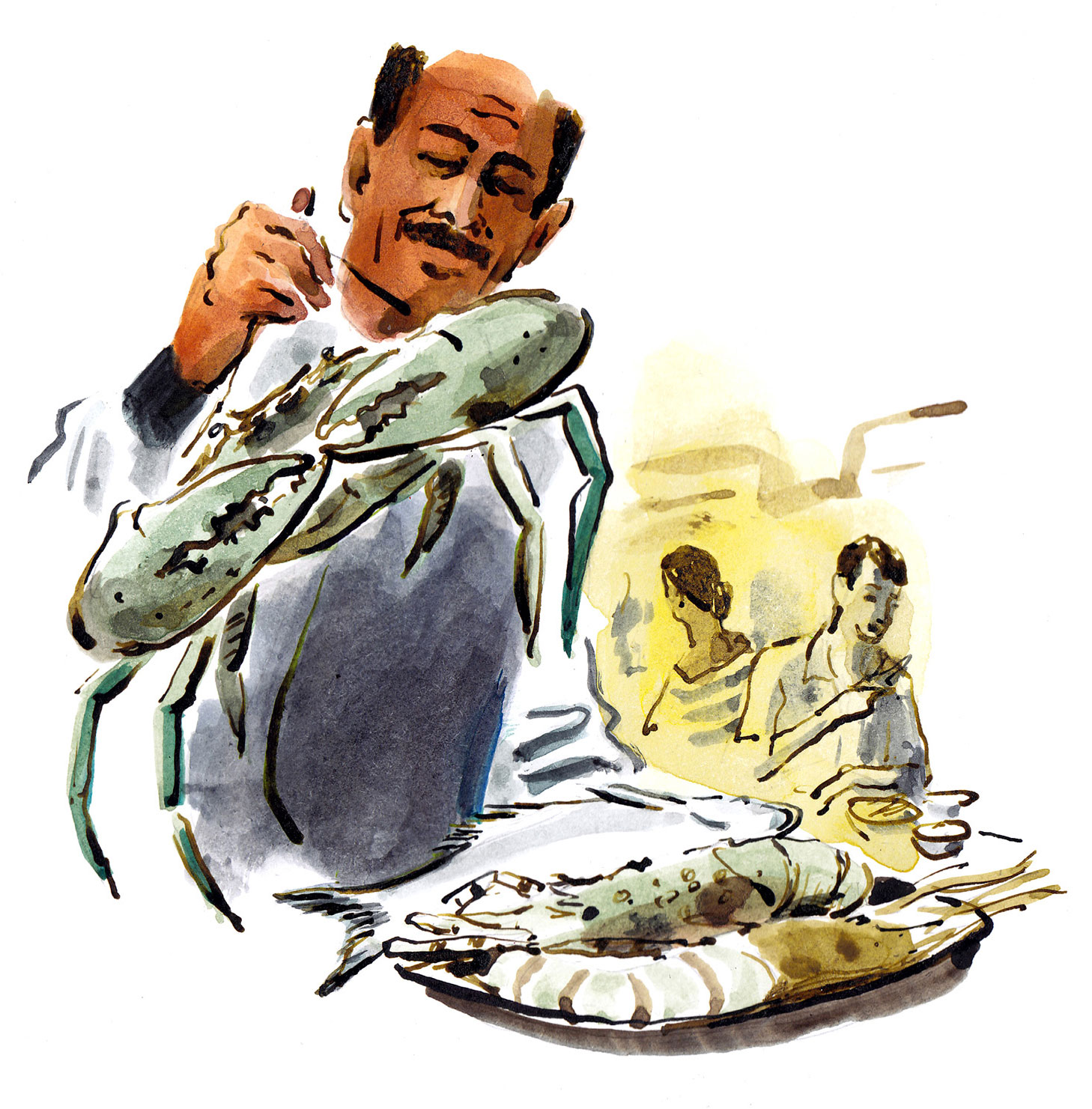
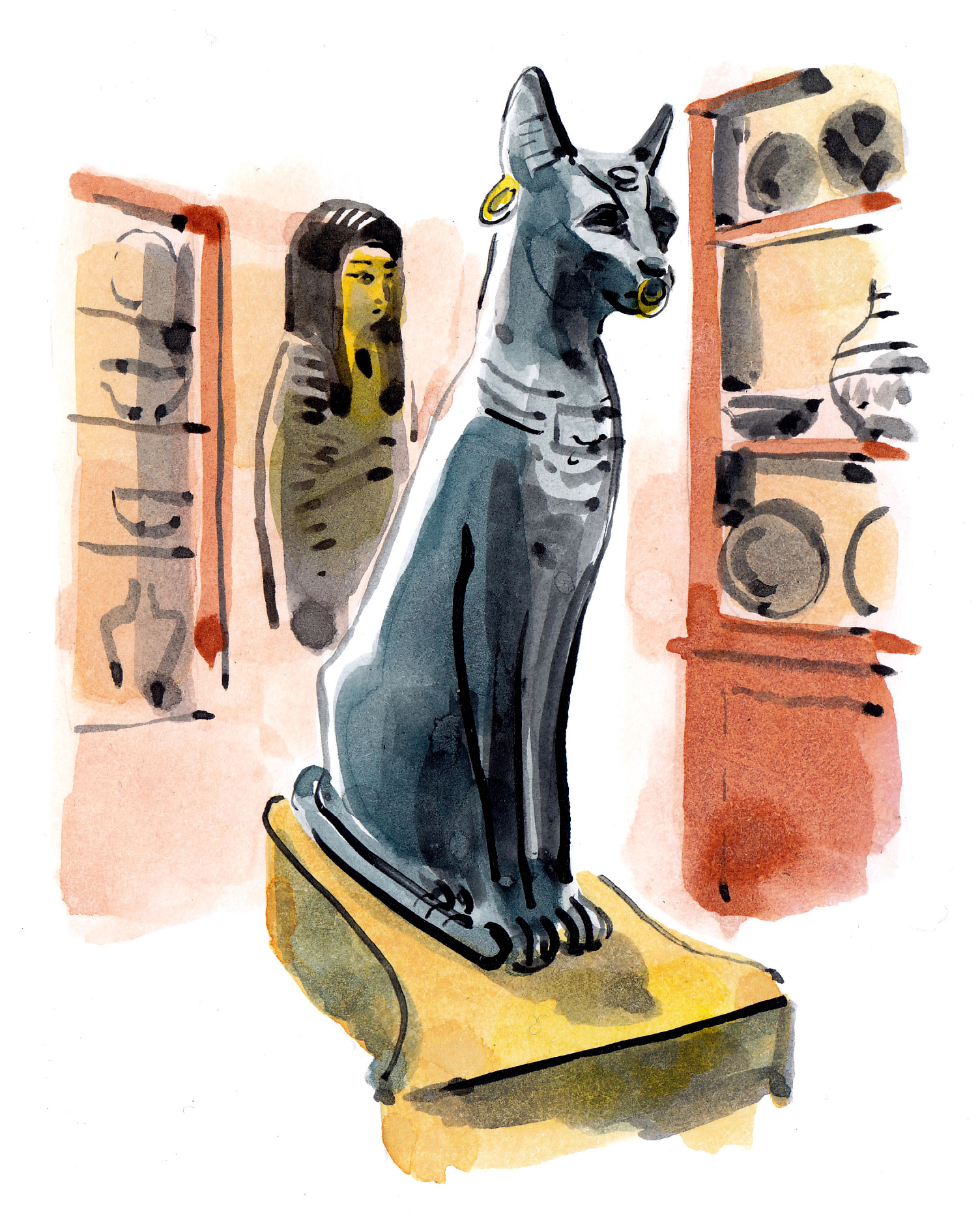
An Istanbul emporium
of objects for bathing
by Rifat Özbek
Abdulla, beside Fez Café, Grand Bazaar, abdulla.com
If I had to recommend just one shop in Istanbul it would be Abdulla, on Halicilar Street in the Grand Bazaar. It’s a totally unique shopping experience that offers the best of traditional and contemporary Turkey. The bulk of what Abdulla sells was made especially for the hammam, or Turkish steam bath. He has the very finest quality hand-loomed peshtemals, or Turkish towels, which are 100 per cent natural cotton, luxuriously thick and tasseled. He has such a beautiful range, all neatly folded in perfect little piles. As well as stocking specialist objects for the hammam, such as takunyas (wooden hammam slippers), keten zincir (scrubbing mitts), ponza (scrubbing brushes) and tas (small metal bowls), Abdulla also sells robes, scarves, hand thrown ceramics and a few fun pieces and divine vintage treasures that may include a rare piece of tribal jewelry or clothing. His soaps have a great following because they are 100 per cent natural, made with olive oil and scented with herbs and flowers: juniper, sandalwood, nettle, almond, citronella. He really has done all the work for you when it comes to sourcing and manufacturing using the best local craftsmanship. Once you’ve browsed his wonderful wares you can pop next door to his Fes Café, with its wonderful old brick arched ceilings, for delicious traditional treats such as baklava and sweet apple pie, accompanied, perhaps, by a cup of thick Turkish coffee or fresh mint tea, served on a beautiful old metal tray, with a glass of water and a little toothpick with a square of delicious lokum, or Turkish delight. A lovely way to end a shopping trip.
Rıfat Özbek is a Turkish fashion designer who transforms vintage fabrics into cushions sold at Yastik in Istanbul, Le Bon Marché in Paris and Dwell in New York
Your address: The St. Regis Istanbul
A museum of
Islamic antiquities
in Cairo by Dr. Zahi Hawass
Gayer-Anderson Museum, Ahmed Ibn Tolon, sca-egypt.org
The Gayer-Anderson Museum is situated right next to the oldest mosque in Cairo, Ibn Tulun. The building it’s housed in has had many owners over the years, one of whom was a woman from Crete, which is how it became known as Beit al-Kritliyya [“house of the Cretan woman”]. It actually consists of two houses. Between them there’s a passage leading to the eastern door of the mosque. When I was young, I used to travel from my village to stay with my aunt. I would visit the pyramids and then play soccer with friends in the streets around this house. The first time I saw it, something about it touched my heart. Its architecture is truly unique. The museum itself takes its name from Major R.G. Gayer-Anderson, an English army officer who in 1935 wrote a letter to the Committee of Arab Antiquities asking to live in the house. He told them he would furnish it in Islamic style, and fill it with precious antiquities. He also promised that, when he died, he would leave everything to them. The committee approved and Anderson began collecting Islamic furniture and artifacts from Egypt, Syria, Asia, Persia, China and Europe. He lived there until 1942, when he was forced to leave Egypt due to ill health. The houses were turned into a museum about 40 years ago. My favorite exhibits are the ostrich egg and the mazwalla [sundial] found in the mosque of Ibn Qalawun, which was used as a watch to announce the time for prayer. I also love the objects that belonged to Gayer-Anderson, displayed in his office, such as his gramophone, typewriter, bottles, personal photographs and a decree from King Farouk. It’s a fascinating window into the past.
Archaeologist Dr. Zahi Hawass is the former Egyptian Minister of Antiquities
Your address: The St. Regis Cairo
